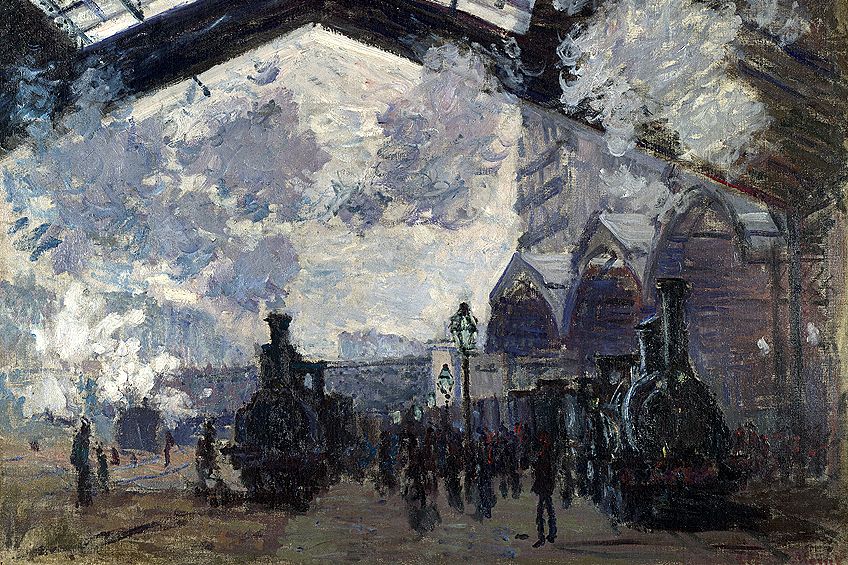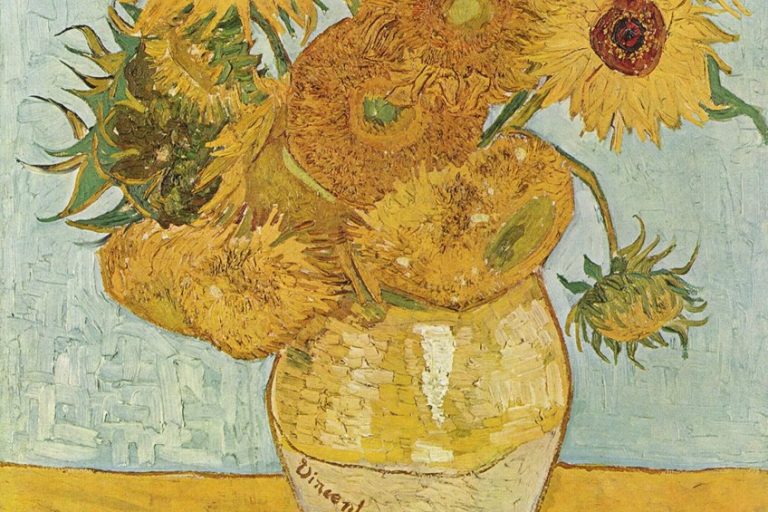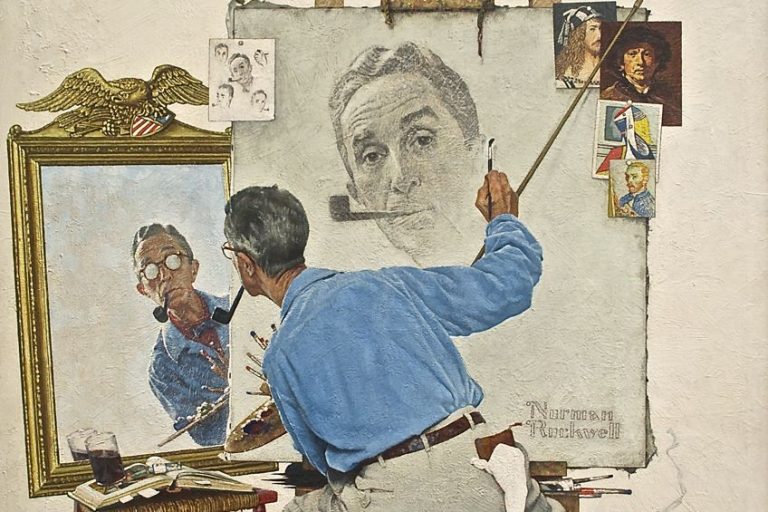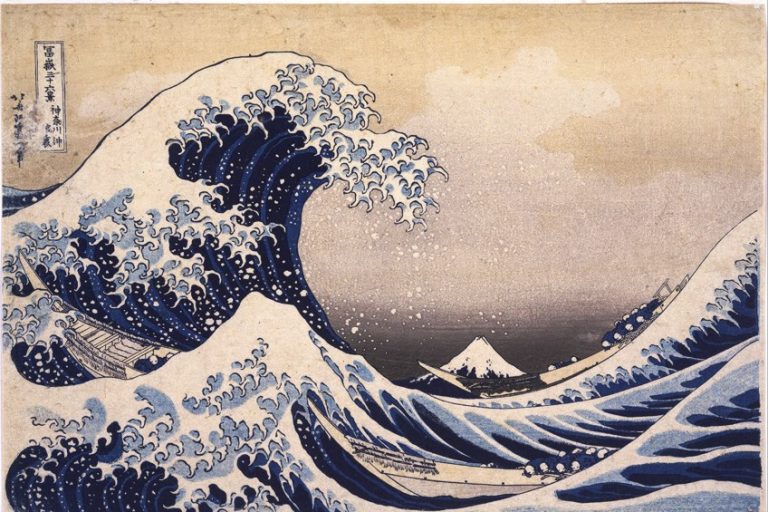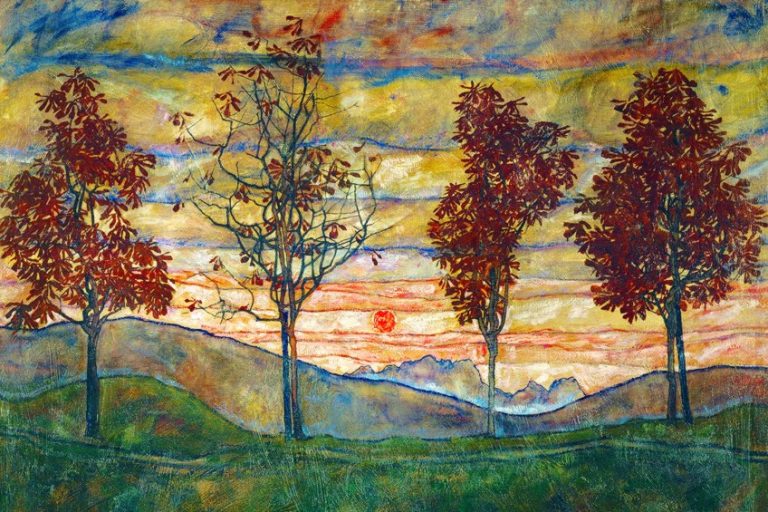“Gare St Lazare” by Claude Monet – Train Station Painting Analysis
Impressionism was one of the most catalyzing and significant art movements of the 19th century that heralded new modes of portraying subject matter – artists were taking to the outdoors and real life! One such artist was Claude Monet, whose name is almost synonymous with Impressionism. This article will discuss his Gare Saint-Lazare painting series, which he created in 1877.
Artist Abstract: Who Was Claude Monet?
The Impressionist Claude Monet’s birth date was on November 14, 1840, and he died on December 5, 1926. While he was born in Paris, he also lived and grew up in Le Havre in Normandy, France. He was interested in art from a young age and gained valuable training from Eugène Boudin, who was a landscape painter. Monet created and sold his art during his teen years, notably caricatures. He eventually moved to Paris where he studied at Académie Suisse, and he lived in various cities throughout his life, eventually living his last days in Giverny. He was known for creating several series of paintings including Water Lilies (c. 1896 – 1920), Rouen Cathedral (c. 1892 – 1894), and Haystacks (c. 1890 – 1891).
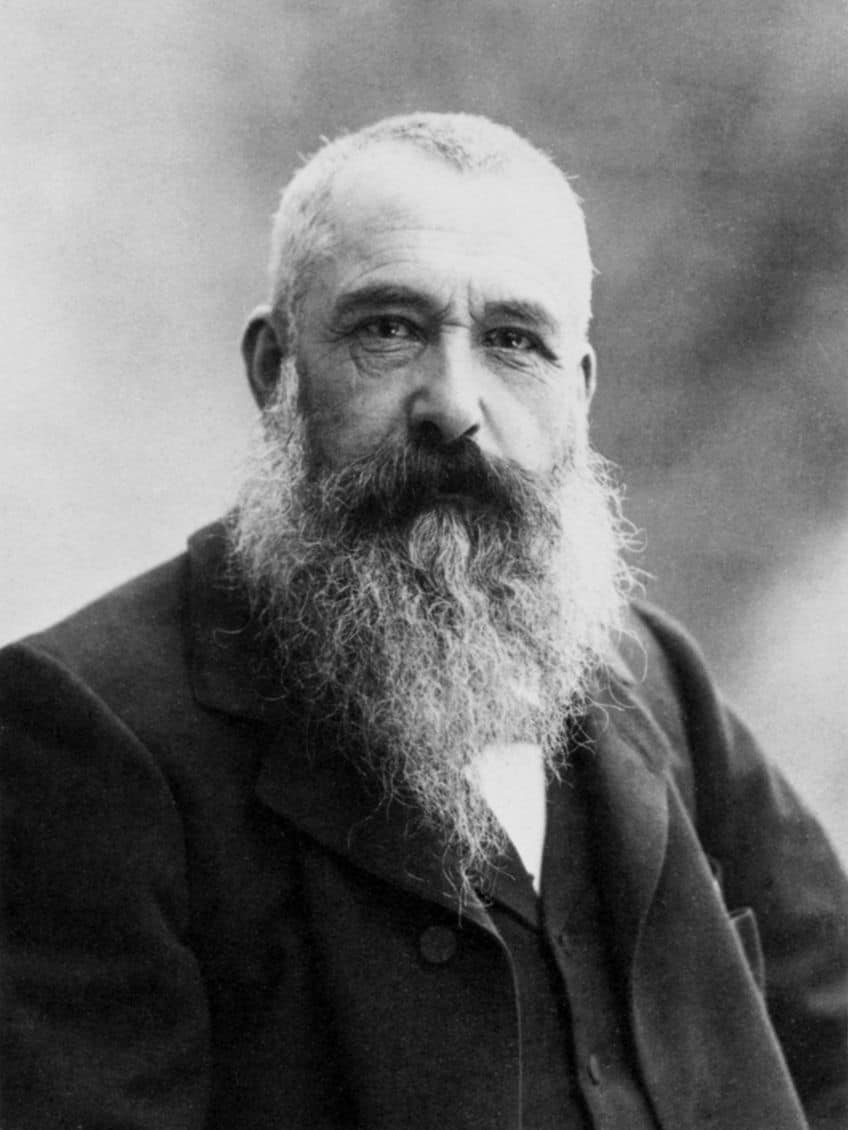
Gare St Lazare (1877) by Claude Monet in Context
There are reportedly 12 versions of the train station painting Gare St Lazare by Claude Monet and all were painted in 1877. We will discuss this series further in the contextual analysis as well as provide a formal analysis of Monet’s art style.
| Artist | Claude Monet (1840 – 1926) |
| Date Painted | 1877 |
| Medium | Oil on canvas |
| Genre | Genre painting |
| Period / Movement | Impressionism |
| Dimensions (cm) | 75 x 105 |
| Series / Versions | Part of La Gare Saint-Lazare series of paintings |
| Where Is It Housed? | Musée d’Orsay, Paris, France |
| What It Is Worth | N/A |
Contextual Analysis: A Brief Socio-Historical Overview
Claude Monet created his Gare Saint-Lazare painting series in 1877, 12 renditions of one of Paris’s main train stations, which was built in 1837. Monet was known for moving to a rented space that was near the Saint-Lazare station in Paris so that he could spend time painting this series.
At that time he and his family lived in Argenteuil reportedly from 1871 to 1878.
Why Paint the Gare Saint-Lazare Train Station?
You might wonder why Claude Monet decided to paint the Gare Saint-Lazare train station, which at that time was around for only 50 years or so. It was a time of great growth and technological progression in Western urban society – truly a time of Modernization.
Some art history sources indicate that this industrialization attracted various artists who sought to depict these bustling and burgeoning moments in time, which the railways provided. Another Impressionist who has been mentioned often is Gustave Caillebotte and his oil on canvas Le Pont de L’Europe (c. 1876), in which he depicted several people walking on the railway bridge, along with a dog walking into the scene.
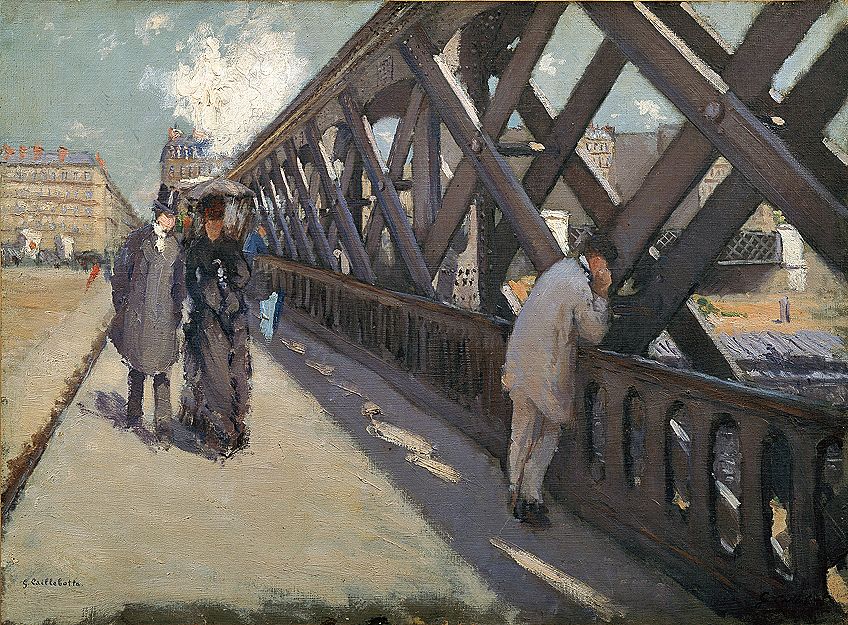
The abovementioned depicts a differently focused perspective compared to what Monet chose, whose perspective has often been compared to other artists like Caillebotte. Monet’s train station painting gave a seemingly close-up of the train station in all its steam and smoke, whereas others depicted it as part of what would be a more aesthetically pleasing rendition of the subject. Apart from the allure of a more modern world, Monet also followed his painterly passion, so to say, which made him one of the most prolific Impressionist painters of his time, which was to depict the fleetingness of the natural world.
This style of painting is referred to as en plein air meaning “outdoors” in French. Monet provides us (the viewers) with a momentary scene, making it easy to imagine what it would be like to stand at the train station, possibly waiting for your next train or getting off a train, but the magic of Monet’s art was in how he depicted the fleetingness of a scene through color and texture.
Monet explored the steam and smoke created by the engines through his application of colors and textures of his paintbrush.
He depicted the varying changes and impressions of light; imagine being at the train station during the day and what the sky and natural sunlight would appear like combined with the steam and smoke of the trains. Interestingly, Monet reportedly also thought of painting Gare du Nord, but he was remembered as approaching the railway director that he wanted to paint the Gare Saint-Lazare station, specifically.
The Impressionist Exhibition
In 1873, a group of Impressionists started an independent art group and exhibition called the Anonymous Society of Painters, Sculptors, Printmakers, Etc. (in French it was termed as the Société Anonyme Coopérative d’Artistes Peintres, Sculpteurs, Graveurs, Etc.).
This was a reaction to the rejection of their art from the Paris Salon, the latter was the primary institution at the time that held art exhibitions, but it followed Academic art rules, which is why the Impressionists undoubtedly did not fit in as they were avant-garde for the times.

Numerous artists, including Claude Monet, exhibited at the Impressionist exhibitions, namely Berthe Morisot, Edgar Degas, Pierre-Auguste Renoir, Gustave Caillebotte, and others. Monet showcased several copies of his Gare Saint-Lazare train station painting at the third Impressionist exhibition in 1877.
Formal Analysis: A Brief Compositional Overview
While the subject matter is similar throughout Claude Monet’s Gare Saint-Lazare painting series – the oncoming and going trains, the waiting bystanders, and the smoke and steam composing a cloudy scene, nonetheless Monet portrayed each iteration from different viewpoints at the Saint-Lazare train station. Let us take a closer look, specifically at the train station painting held at the Musée d’Orsay in Paris, France, which is alternatively titled Interior View of the Gare Saint-Lazare, the Auteuil Line.
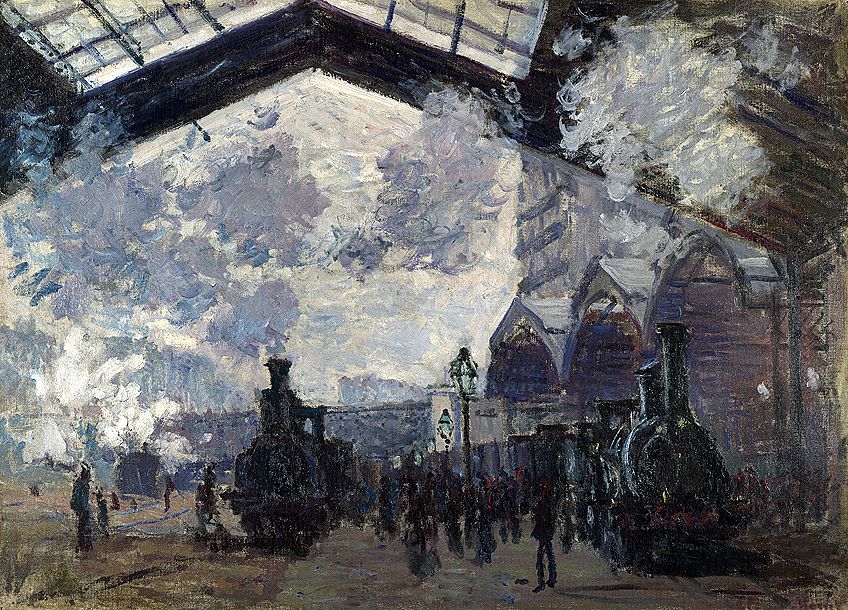
Subject Matter: Visual Description
Claude Monet’s Gare Saint-Lazare painting depicts a view of an oncoming black train entering the Saint-Lazare station; the train appears slightly off-center to the left in the middle ground. It almost appears as if Monet sat on the train track to capture a head-on perspective of the oncoming train. The composition depicts a wide-angled view of the interior of the station, from the empty train track (waiting to be filled by the oncoming trains) in the foreground to the A-frame of the canopy and its beams opening to a view of several buildings in the background, visible through the steamy and smoky setting.
There also appears to be another train (or carriage) to the left and one far into the right background.
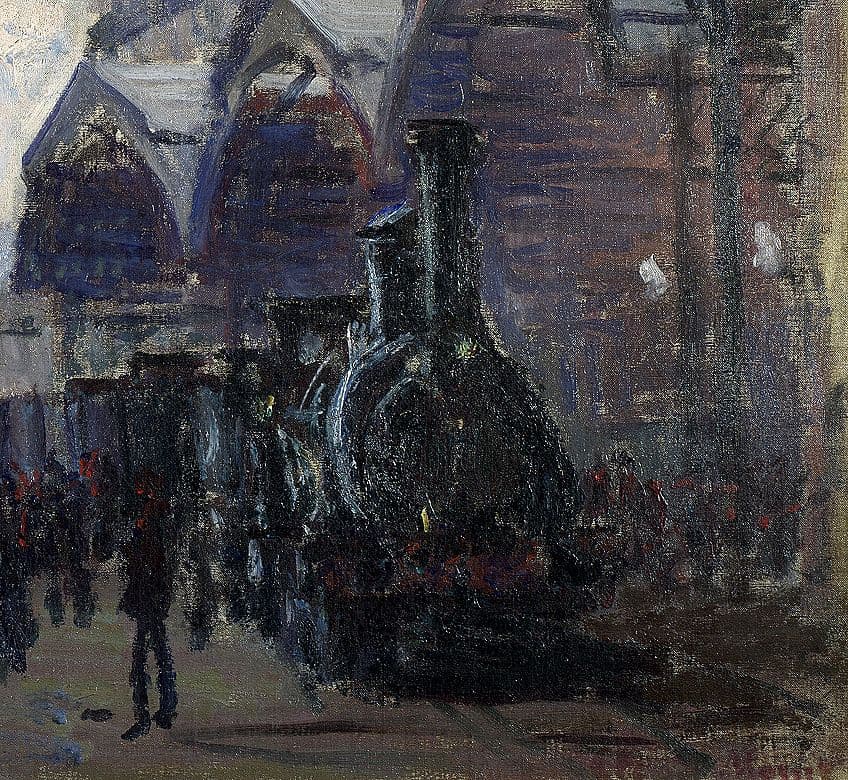
There are numerous people standing throughout the composition, to the left, partially noticeable through the haze created by the steam and smoke. The most notable is a man in the foreground towards the right, and reaching into the right background are more people in a clearer view.
Color
Claude Monet utilized a variety of colors in the Gare Saint-Lazare painting, reportedly from pinks, yellows, blues, and more neutrals like grays, white, and black. The overall color scheme of the composition appears harmonious because there are no overly bright areas of color.
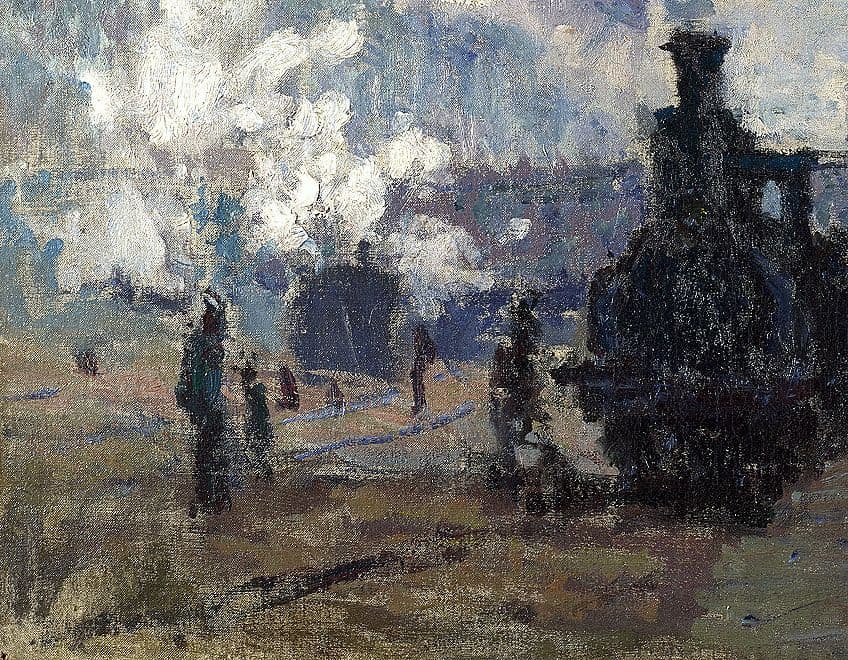
Texture
The Gare Saint-Lazare painting is filled with tactile texture from Monet’s paintbrush, for example, the thicker applications otherwise known as impasto.
The brushstrokes are also applied in varying sizes, from thick, choppier strokes to thinner and longer brushstrokes.
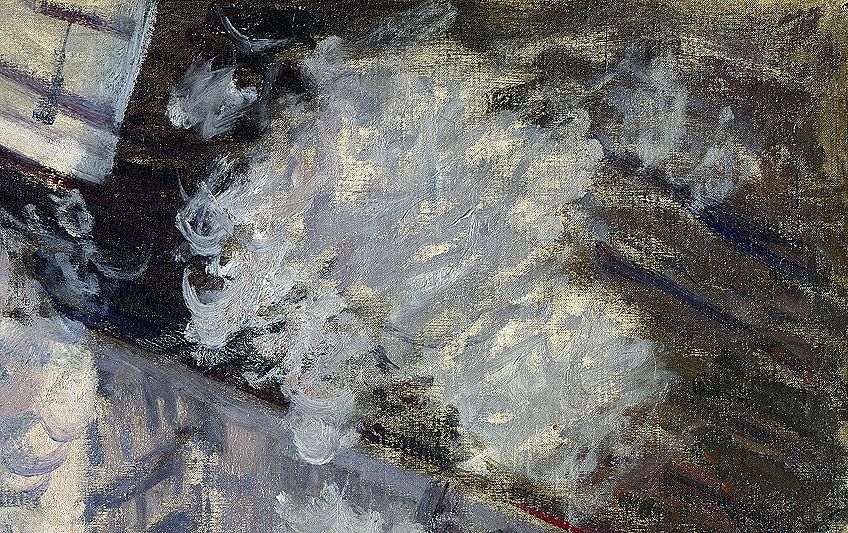
Line
There are a variety of lines created in Gare St Lazare by Claude Monet, notably curved and curled lines created by the fluidity of the brushstrokes that delineate the subject matter. There are also straight lines created by the lines of the train station canopy and beams overhead.
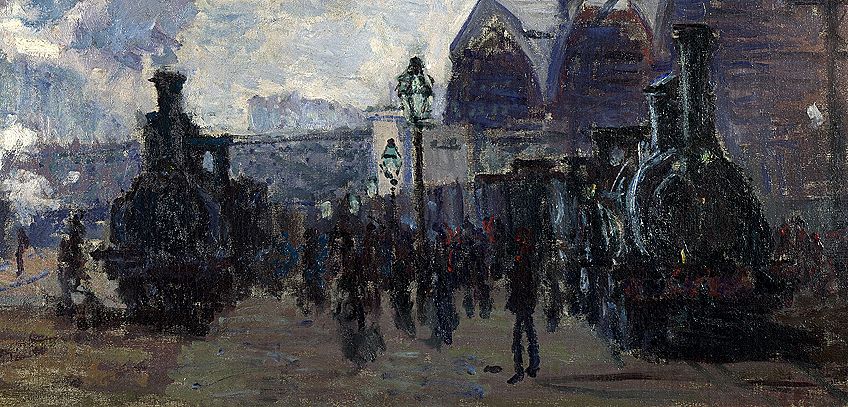
Shape and Form
There are also naturalistic and geometric shapes and forms in Gare St Lazare by Claude Monet, for example, the naturalistic portrayal of an outdoor scene subtly contrasted by some of the geometric shapes of the urban environment.
For example, the surrounding architectural elements.
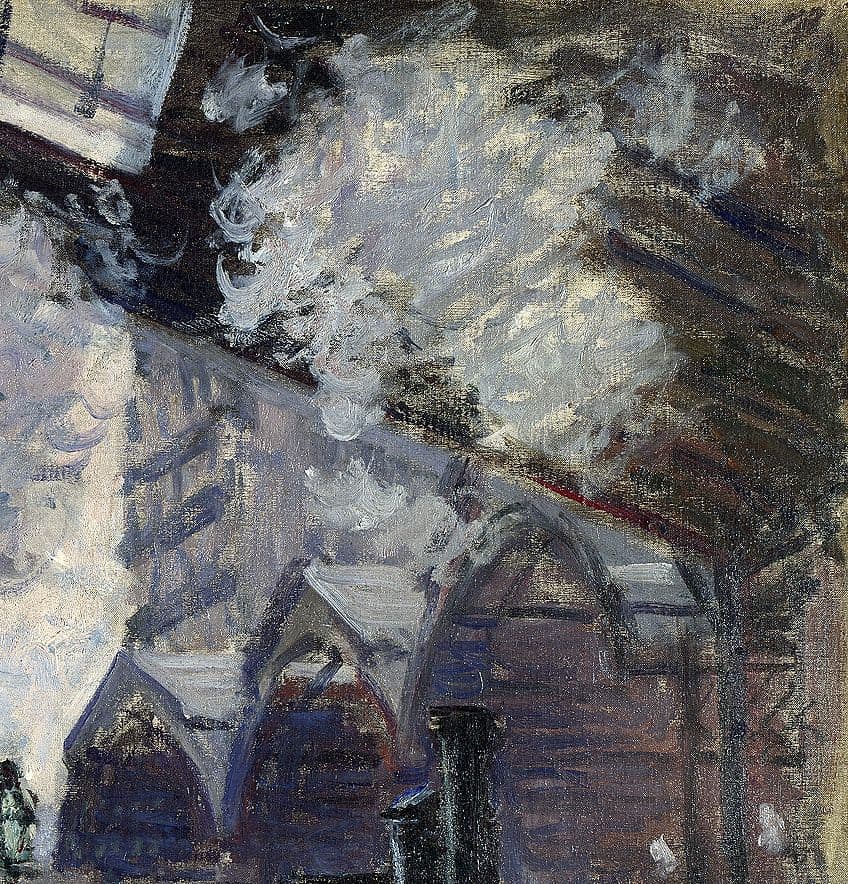
Space
There is a framing effect created by the train station’s canopy, which further emphasizes the subject matter of the trains entering and leaving the station. The foreground opens to the urban scene ahead, and Monet created a sense of depth through his use of color and scale.

Monet’s Kaleidoscopes of Color
Gare St Lazare by Claude Monet is a fine example of the artist’s commitment to exploring light and textures that occur in the natural and urban environment. Monet created numerous such studies, so to say, that became beautiful kaleidoscopes of color on a canvas, but we must not forget that through this, he gave us a glimpse of life.

This article discussed Claude Monet’s famous train station painting series titled “Gare Saint-Lazare”, which consists of 12 paintings created in 1877. In a formal analysis, we focused specifically on the painting housed at the Musée d’Orsay in Paris, France.
Frequently Asked Questions
Who Created the Gare Saint-Lazare Train Station Painting?
The famous Impressionist Claude Monet created his oil on canvas series titled Gare Saint-Lazare in 1877, of which there are 12 versions housed in different art collections. It depicts Monet’s visual observations of the Gare Saint-Lazare train station in Paris.
Is Gare St Lazare by Claude Monet Part of a Series?
Yes, Claude Monet painted 12 versions of the Parisian train station, Gare Saint-Lazare. Each rendition depicts different angles, and in a true Impressionist style, explores the effects of light as well as the burgeoning industrialized world of transportation by train.
What Is the Train Station in Claude Monet’s Artwork?
Claude Monet was famous for producing various painting series, and among these was his Gare Saint-Lazare series, which consists of 12 views of the Gare Saint-Lazare train station in Paris.
Alicia du Plessis is a multidisciplinary writer. She completed her Bachelor of Arts degree, majoring in Art History and Classical Civilization, as well as two Honors, namely, in Art History and Education and Development, at the University of KwaZulu-Natal, South Africa. For her main Honors project in Art History, she explored perceptions of the San Bushmen’s identity and the concept of the “Other”. She has also looked at the use of photography in art and how it has been used to portray people’s lives.
Alicia’s other areas of interest in Art History include the process of writing about Art History and how to analyze paintings. Some of her favorite art movements include Impressionism and German Expressionism. She is yet to complete her Masters in Art History (she would like to do this abroad in Europe) having given it some time to first develop more professional experience with the interest to one day lecture it too.
Alicia has been working for artincontext.com since 2021 as an author and art history expert. She has specialized in painting analysis and is covering most of our painting analysis.
Learn more about Alicia du Plessis and the Art in Context Team.
Cite this Article
Alicia, du Plessis, ““Gare St Lazare” by Claude Monet – Train Station Painting Analysis.” Art in Context. March 27, 2023. URL: https://artincontext.org/gare-st-lazare-by-claude-monet/
du Plessis, A. (2023, 27 March). “Gare St Lazare” by Claude Monet – Train Station Painting Analysis. Art in Context. https://artincontext.org/gare-st-lazare-by-claude-monet/
du Plessis, Alicia. ““Gare St Lazare” by Claude Monet – Train Station Painting Analysis.” Art in Context, March 27, 2023. https://artincontext.org/gare-st-lazare-by-claude-monet/.


